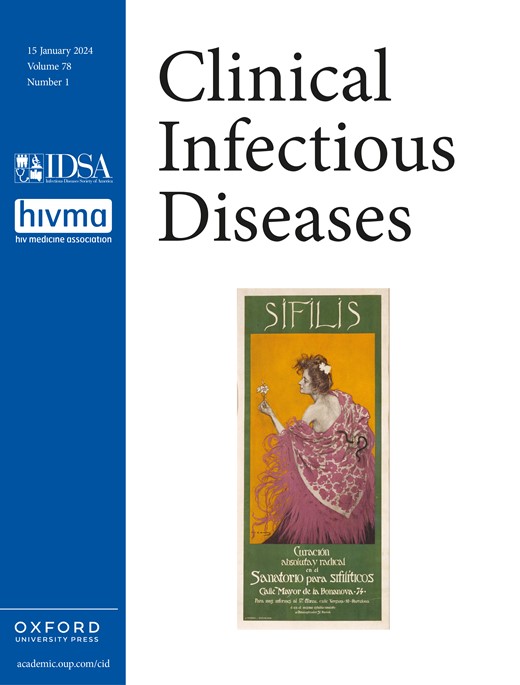Body mass index trajectories and association with tuberculosis risk in a cohort of household contacts in Southern Africa
IF 8.2
1区 医学
Q1 IMMUNOLOGY
引用次数: 0
Abstract
Background Studies have demonstrated an inverse log-linear relationship between body mass index (BMI) and tuberculosis incidence. However, a person’s BMI is dynamic and longitudinal changes may be more informative than cross-sectional assessments. We evaluate the association between cross-sectional and changing BMI and risk of tuberculosis and describe longitudinal trajectories in a high-risk cohort. Methods ERASE-TB was a prospective longitudinal cohort study of household contacts ≥10 years in Southern Africa (Zimbabwe, Tanzania, and Mozambique), with 6-monthly follow-up up to 24 months. Associations between BMI and tuberculosis were investigated based on baseline (including haemoglobin) and changing BMI, using logistic, Poisson, and Cox models. Prevalent tuberculosis was defined as diagnosis during <30 days after recruitment. Growth mixture modelling (GMM) was used to model longitudinal latent trajectories. Results Of 2,107 recruited household contacts (621 [29.5%] adolescents and 1,310 [62.2%] female), 520 (24.7%) were underweight. There were 21 and 41 people diagnosed with prevalent and incident tuberculosis, of whom 5/21 (23.8%) and 12/41 (29.3%) were underweight. Being underweight and anaemic (aHR: 3.77, 95% CI: 1.50-9.51) and >10% negative change in BMI during follow-up (aIRR: 2.27 (95% CI: 0.22-22.9) were associated with increased risk of incident tuberculosis. The association between continuous BMI-for-age Z-scores were non-linear, with increased risk of tuberculosis with lower BMI. Four latent groups were defined in the GMM: increasing, decreasing, and low/high stable BMI. Conclusions Declining BMI, regardless of absolute value, is a strong predictor of tuberculosis among household contacts. Longitudinal measurements should be considered in active case finding among tuberculosis-affected households.南部非洲一组家庭接触者的体重指数轨迹及其与结核病风险的关系
研究表明,身体质量指数(BMI)与结核病发病率之间存在负对数线性关系。然而,一个人的BMI是动态的,纵向变化可能比横向评估更有信息。我们评估了横断面和变化的BMI与结核病风险之间的关系,并描述了高风险队列中的纵向轨迹。方法ERASE-TB是一项前瞻性纵向队列研究,研究对象为南部非洲(津巴布韦、坦桑尼亚和莫桑比克)≥10年的家庭接触者,随访6个月至24个月。基于基线(包括血红蛋白)和BMI变化,使用logistic、泊松和Cox模型调查BMI与结核病之间的关系。在招募后30天内诊断为流行结核病。生长混合模型(GMM)用于模拟纵向潜在轨迹。结果2107例家庭接触者中,青少年621例(29.5%),女性1310例(62.2%),体重过轻520例(24.7%)。其中21 /21(23.8%)和12/41(29.3%)体重过轻。体重过轻和贫血(aHR: 3.77, 95% CI: 1.50-9.51)以及随访期间BMI出现10%的负变化(aHR: 2.27 (95% CI: 0.22-22.9)与发生结核病的风险增加相关。连续BMI-年龄z -评分之间的关系是非线性的,BMI越低,患肺结核的风险越高。在GMM中定义了四个潜在组:增加、减少和低/高稳定BMI。结论:BMI下降,无论其绝对值如何,都是家庭接触者中结核病的有力预测因子。在结核病感染家庭中主动发现病例时应考虑纵向测量。
本文章由计算机程序翻译,如有差异,请以英文原文为准。
求助全文
约1分钟内获得全文
求助全文
来源期刊

Clinical Infectious Diseases
医学-传染病学
CiteScore
25.00
自引率
2.50%
发文量
900
审稿时长
3 months
期刊介绍:
Clinical Infectious Diseases (CID) is dedicated to publishing original research, reviews, guidelines, and perspectives with the potential to reshape clinical practice, providing clinicians with valuable insights for patient care. CID comprehensively addresses the clinical presentation, diagnosis, treatment, and prevention of a wide spectrum of infectious diseases. The journal places a high priority on the assessment of current and innovative treatments, microbiology, immunology, and policies, ensuring relevance to patient care in its commitment to advancing the field of infectious diseases.
 求助内容:
求助内容: 应助结果提醒方式:
应助结果提醒方式:


